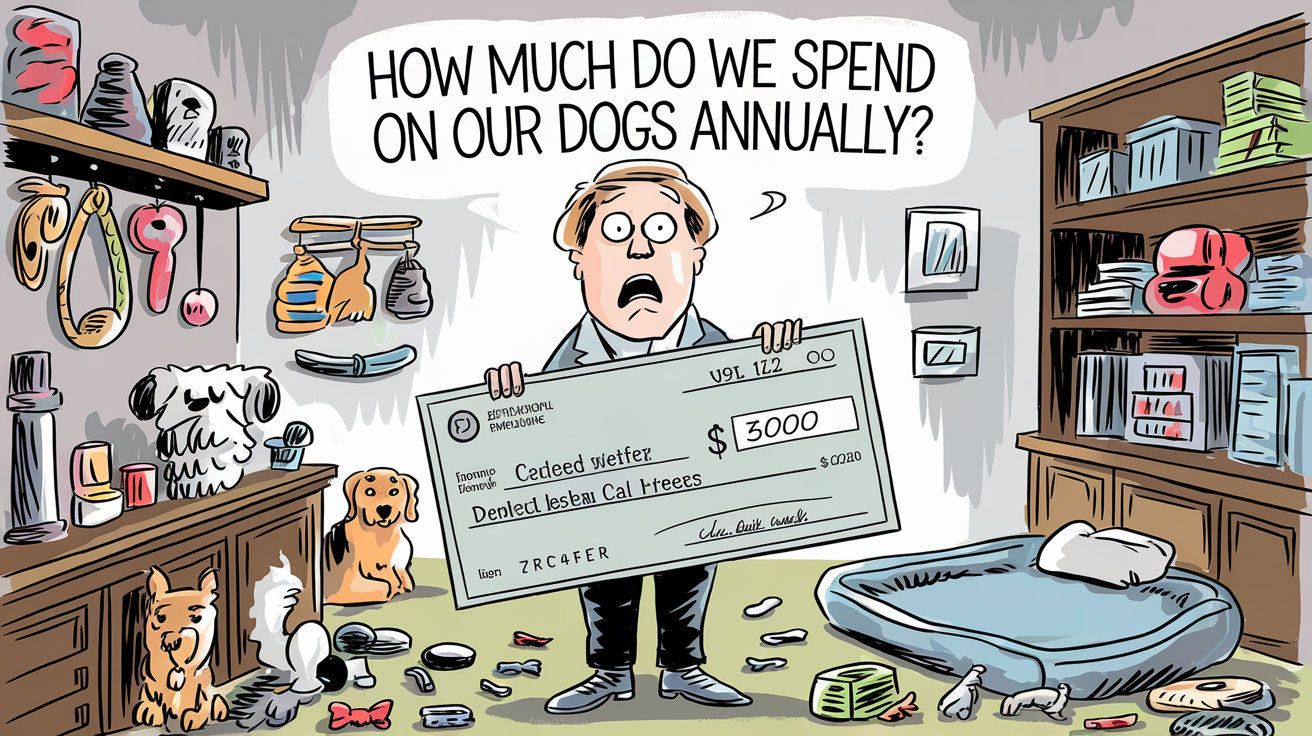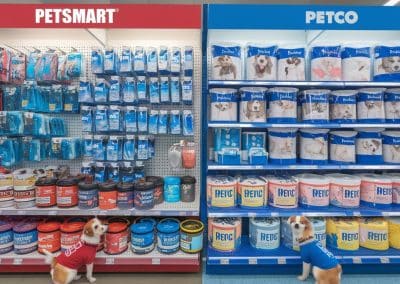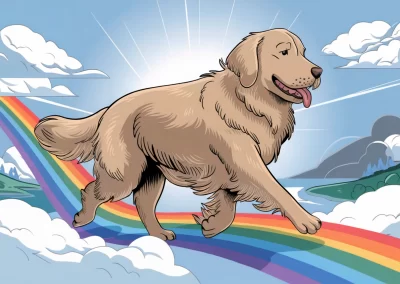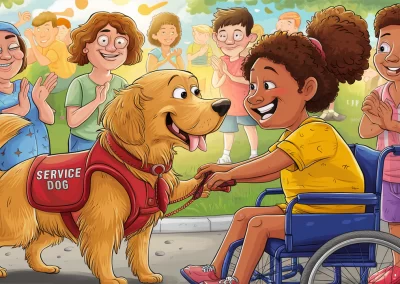How Much Do We Spend on Our Dogs Annually?. Dogs bring immense joy and companionship to millions of American households, but have you ever wondered exactly how much we spend on our furry friends each year?
On average, American dog owners spend around $912 annually on their pets. This includes costs for vet visits, food, and over-the-counter medicine, which are typically the most significant expenses.

Pet owners, especially those with higher incomes and education levels, often go above and beyond in ensuring their pets receive the best care.
For instance, those earning $200,000 or more tend to allocate a significant portion of their budget to their dogs. Additionally, more people are investing in pet insurance to manage unexpected veterinary costs, highlighting the growing trend of treating pets as family members.
For Texas dog owners, the spending is even higher. In 2024, they are estimated to spend a staggering $8.58 billion on their pets, covering everything from food to veterinary care. This substantial investment in pets demonstrates just how much love and care Americans have for their four-legged companions.
Annual Costs of Dog Ownership
Owning a dog comes with various expenses, from the initial setup costs to routine yearly expenses and unexpected emergencies. These costs can add up quickly, so it’s important to be prepared.
Initial Expenses for New Dog Owners
When bringing a new dog into your home, you’ll face initial costs for pet products and services.
These can include adoption fees, vaccinations, spaying or neutering, and necessary items like a bed, leash, collar, and toys.
On average, it costs around $750 to adopt a dog and prepare your home. Adopting from a shelter can be cheaper than buying from a breeder, which might cost a few thousand dollars.
You’ll also need basic health care services. Initial vet visits for vaccinations and a health check can add up to about $100-$300. Basic training classes might cost another $100-$200.
These early investments ensure your dog’s well-being and happiness right from the start.
Routine Yearly Expenses
Routine yearly expenses include pet insurance, food, and regular veterinary services.
The average cost to own a dog is about $2,175 per year. Pet insurance can cover unexpected vet bills, ranging from $240-$600 annually, depending on the coverage.
Food costs vary based on the dog’s size and dietary needs, typically ranging from $300 to $900 annually.
Regular vet check-ups, vaccinations, and flea and tick prevention add another $200-$400 per year. Grooming costs, including nail trimming and baths, can range from $50 to $200.
These routine expenses ensure your pet remains healthy and well-cared for.
Unexpected Costs and Emergencies
Emergencies can happen at any time and can be quite costly. Injuries, illnesses, and other urgent health issues may require expensive treatments.
It’s likely you’ll pay at least $500 for an emergency vet visit, with some treatments costing much more. Having pet insurance can help offset these unexpected costs, although it won’t cover everything.
Aside from medical emergencies, you might face other unexpected costs like property damage caused by your dog or additional boarding fees if you need to travel.
It’s wise to set aside a small emergency fund for such situations, around $200-$500 yearly, to cover any surprises. Being prepared can help alleviate stress and keep your dog safe and healthy.
Analyzing Pet Food Expenditures
When it comes to spending on our dogs, a significant portion goes toward their food. This section will break down the types of dog food and the factors that influence their cost.
Types of Dog Food and Treats
Dog food comes in various forms – dry kibble, wet food, raw, and premium food. Each type has its own benefits and price points.
Dry kibble is the most common and typically the most affordable. It’s convenient, has a long shelf life, and provides balanced nutrition.
Wet food often appeals more to dogs due to its texture and moisture content. However, it’s usually more expensive and spoils faster.
Raw diets and premium foods have gained popularity among pet owners who want the best for their pets. These options can include high-quality ingredients like real meat, vegetables, and grains but come with a higher price tag.
Dog treats also contribute significantly to food expenditures. Dental chews, training treats, and gourmet snacks can add up, especially if used frequently.
Factors Affecting Food Costs
Several factors affect how much dog owners spend on food. The quality of ingredients is a major one. High-quality, organic, or non-GMO ingredients cost more.
Brand reputation and marketing also influence prices. Well-known brands with extensive marketing campaigns often charge higher prices.
Dog size matters too. Larger dogs eat more, leading to higher monthly food costs. Health conditions or dietary restrictions can necessitate special food, which can be pricier.
Lastly, location plays a role as well. Prices for pet food can vary widely depending on where you live. Urban areas with higher costs of living often see higher pet food prices.
The Growing Market for Pet Products
The pet market is expanding rapidly, with pet ownership driving increasing sales in items like toys, beds, and even technology. Families consider pets as part of the family, which means higher spending on quality products.
Popular Pet Accessories
Pet accessories have become essential for enhancing the lives of pets and their owners.
Items like toys are not just about fun; they also provide mental stimulation and exercise for dogs. Chew toys, puzzle toys, and interactive toys are particularly popular.
Beds are another crucial accessory. Dogs need comfortable beds for rest, especially as they age. High-quality, orthopedic beds are in demand for older pets. Pet stores also offer stylish, machine-washable options that fit well with home decor.
Dog shampoo is essential for hygiene. From hypoallergenic shampoos to those tailored for specific breeds, the variety is vast. Specialized shampoos help with skin conditions, shedding, and even enhancing fur color.
Technology and Pet Innovation
The integration of technology into pet care is revolutionizing how we care for our dogs.
Smart pet feeders, for example, allow owners to schedule feeding times, ensuring pets receive their meals even when the owner isn’t home. These devices can be controlled via smartphone apps.
GPS collars and microchip implants offer safety. GPS collars track a dog’s location in real-time, giving owners peace of mind. Microchip implantation, an older but still vital technology, helps return lost pets to their owners.
Automated pet toys are another tech innovation. Robots and laser toys that move unpredictably keep pets engaged for longer periods. These gadgets prevent boredom and provide exercise, which is crucial for indoor pets.
The pet industry is also seeing advancements in health monitoring.
Wearables that track activity levels, heart rate, and sleep patterns are becoming popular. Owners can stay informed about their pet’s health, catching potential issues early.
Pet Health Care and Veterinary Services

Taking good care of a dog’s health involves more than just regular check-ups. Dog owners often face both routine and emergency situations that require different levels of medical attention.
Routine Medical Care for Dogs
Routine medical care for dogs is essential to keep them healthy and catch any issues early.
This includes regular check-ups, vaccinations, and annual blood work. Regular visits to the vet help track your dog’s weight, check for parasites, and ensure they are up-to-date on vaccines.
Vaccinations are key to preventing severe illnesses like rabies, parvo, and distemper. Most dogs need these at least once a year. Flea, tick, and heartworm prevention should also be administered consistently, either monthly or quarterly. Some owners choose pet insurance to help cover these routine costs.
Preventive care also includes dental cleanings which prevent gum disease and other dental issues. Regular grooming and nail trims fall under this category too, as they help catch skin issues and other health problems early.
Specialized Treatments and Surgery
When it comes to specialized treatments and surgery, costs and decisions can become complex.
Treatments range from hip dysplasia surgeries to cancer treatments. These procedures can be quite expensive, often running into thousands of dollars. Having pet insurance can significantly ease this financial burden.
Complex surgeries might include orthopedic procedures, often needed for breeds prone to joint problems. These can cost between $1,500 and $4,000. Cancer treatments such as chemotherapy might range from $3,000 to $10,000.
Emergency surgeries are another common scenario.
These can happen due to accidents, bloat, or internal issues. Such surgeries are not only expensive—sometimes costing upward of $5,000—but also stressful for both the pet and owner.
Medications prescribed for recovery can add to the costs. Without proper insurance, these expenses can overwhelm pet owners, making pet insurance premiums seem worthwhile. It often covers part of the surgery and medication costs, easing financial stress while ensuring the best care for the dog.
Insurance and Healthcare Costs

Taking care of a dog involves more than just love and affection. Pet insurance and healthcare can help manage the costs of veterinary services, medicines, and emergency treatments that dogs may need.
Comparing Pet Insurance Plans
Pet insurance plans vary in coverage and cost. On average, dog insurance costs about $56 per month, or $676 per year.
Basic plans often cover accidents and illnesses. Meanwhile, more comprehensive plans can include preventive care, vaccinations, and dental treatments.
Key factors to look for:
- Annual deductible: The amount paid out-of-pocket before coverage kicks in.
- Reimbursement level: Percentage of the bill the insurance covers.
- Annual coverage limit: The maximum amount the insurance will pay each year.
Personal stories, such as a dog’s unexpected surgery with a $3,000 vet bill, highlight why choosing the right plan is crucial.
Is Pet Insurance Worth It?
Pet insurance can save money, especially during emergencies. Without insurance, a single surgery can cost thousands. Annual check-ups, vaccinations, and treatments for conditions like arthritis also add up over time.
Some may question if it’s worth it. Consider this: without insurance, unexpected vet bills can lead to financial stress. Yet, with insurance, those costs become more manageable.
It’s a bit like health insurance for people—peace of mind is invaluable.
A common example is a pet owner paying $50 per month for insurance but saving $2,000 on a surgery that would have been unaffordable otherwise.
Ultimately, pet insurance provides a safety net, ensuring that cost is never a barrier to getting the best care for their furry friend.
Regional Differences in Dog Expenses

Different regions in the United States have varying costs for owning a dog, influenced by factors like local living expenses and access to veterinary care. Other elements, such as whether one lives in a city or a rural area, also play a significant role.
Cost Variations Across the United States
Dog ownership costs differ significantly across states. For example, in Mississippi and Arkansas, the expenses are generally lower. This is due to the overall cost of living in these areas being more affordable.
On the other hand, states like Indiana and Oklahoma see moderate costs, influenced by middle-ground living expenses.
In contrast, Montana and West Virginia have variable dog expenses due to a mix of low population density and occasional higher costs for specialized veterinary services.
Meanwhile, Kentucky and Tennessee showcase surprisingly higher costs, maybe because of higher-priced veterinary services and premium pet foods. Alabama and Nebraska offer more affordable options for dog owners.
Difference in City vs. Rural Expenses
City dog owners typically face higher costs compared to their rural counterparts.
In urban areas, such as those in Tennessee and Alabama, expenses like grooming, pet sitting, and even dog walking add up quickly.
This is because these services are generally priced higher due to increased demand and a higher cost of living.
Rural areas in states like Kentucky or Arkansas tend to have lower costs for essential services. Access to local veterinarians and affordable supplies often keep expenses down.
However, in rural areas, specialized services can be harder to find. This may require pet owners to travel further distances, which adds travel costs to the mix.
Despite these differences, dog owners in rural areas often find that the overall cost remains lower than in bustling urban centers, making dog ownership more feasible.
Impact of Generation and Lifespan on Dog Costs

Dog ownership costs vary significantly based on the owner’s generation and the lifespan of the dog. Different age groups prioritize spending differently, resulting in diverse financial impacts.
Millennial and Gen Z Pet Owners
Millennials and Gen Z are known for treating their pets like family members. They often invest heavily in quality food, grooming, and pet health insurance.
For instance, in 2020, Americans spent a record $103.6 billion on pets. A large portion of that came from younger generations, who view their pets as significant companions.
These generations are also more likely to purchase pet-related technology, like GPS collars and pet cameras. They favor premium products, driving up annual costs.
They might spend more on pet wellness and emotional care, reflecting the modern pet culture.
Baby Boomer and Generation X Pet Spending
Baby Boomers and Generation X tend to focus on practical pet expenses. In 2019, American pet spending was $77.44 billion, with Boomers contributing significantly.
Boomers, in particular, are known for increased spending on pet food due to health concerns.
Unlike younger generations, Boomers may not splurge as much on luxury items or pet tech. They are more budget-conscious, often choosing value for money.
Generation X follows similar patterns, with careful spending on necessities like veterinary care and food, but avoiding non-essential items.
Both groups still show a deep commitment to their pets, evidenced by their consistent expenditure on healthcare and essential supplies. They focus on ensuring their pets’ well-being through practical and necessary expenditures.
The Influence of Pandemics on Pet Spending
Pandemics, especially COVID-19, have changed the way we spend on our pets, including dogs. Spending habits have shifted and the pet industry has shown significant resilience and growth.
Changes in Spending Habits Post-COVID-19
During the COVID-19 pandemic, pet ownership surged as people sought companionship while staying home. This led to an increase in spending on pet food, toys, and healthcare.
Interestingly, the American Kennel Club reported that small dogs remained especially popular, highlighting a specific trend in pet ownership.
Online shopping and ecommerce platforms also played a crucial role. Many pet owners turned to online stores to purchase pet supplies and services, leading to a rise in demand for home delivery options.
Social media platforms like Instagram and Facebook saw a rise in pet-related content, driving interest and purchases for trendy pet products.
Pet Industry Resilience and Growth
Despite the economic challenges brought on by the pandemic, the pet industry has shown remarkable resilience.
Pet spending statistics reveal that annual expenditures on pets remained high, even as other spending categories saw declines.
Pet services, such as grooming and veterinary care, adapted by offering curbside pick-ups and telehealth consultations.
Retailers like Pets at Home noted that people were unlikely to cut back on pet spending even as the cost of living rose. This indicates that pet owners prioritize their pets’ well-being even in tough financial times.
Future Predictions and Trends in Pet Spending

Pet spending in the United States shows no sign of slowing down. According to the latest pet spending statistics, Americans are more willing than ever to splurge on their furry friends. This trend is expected to continue growing as people increasingly view pets as family members.
With the current pace, pet owners are projected to spend even more on luxury pet items. These include everything from high-end pet food to designer collars. It’s not just about basics anymore; pet owners want the best for their companions.
Technology is also playing a huge role in this spending surge. Innovations in pet care gadgets, such as smart collars and automatic feeders, are becoming more popular. These products make pet care easier and more engaging for owners, driving additional spending.
In Texas alone, spending on pets is set to rise significantly. In 2023, Texas pet owners spent about $3.67 billion on food and treats and $1.82 billion on vet care and products. For 2024, estimates suggest they will spend a whopping $8.58 billion. For more details, check out this comprehensive study.
Meanwhile, other countries like Canada are seeing similar trends. The yearly cost to own a dog in Canada jumped from USD 2,450 in 2021 to USD 3,020 in 2024. This marks a 23.3% increase, showing that this trend is not just limited to the United States.
Many predictions for the future also suggest a rise in pet health insurance. With veterinary costs climbing, more pet owners are likely to opt for insurance to manage expenses better.
The National Pet Owners Survey indicates that pet ownership keeps increasing, which will naturally drive up spending. As this happens, brands will continue to innovate to meet the higher expectations and needs of pet owners.
The Bureau of Labor Statistics may also reveal interesting data in the coming years. This data will show exactly how much families are allocating from their budgets to pet care. This shift in spending habits presents an interesting angle on how societal norms around pet ownership are changing.









